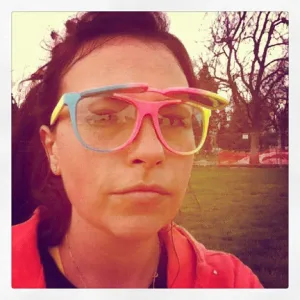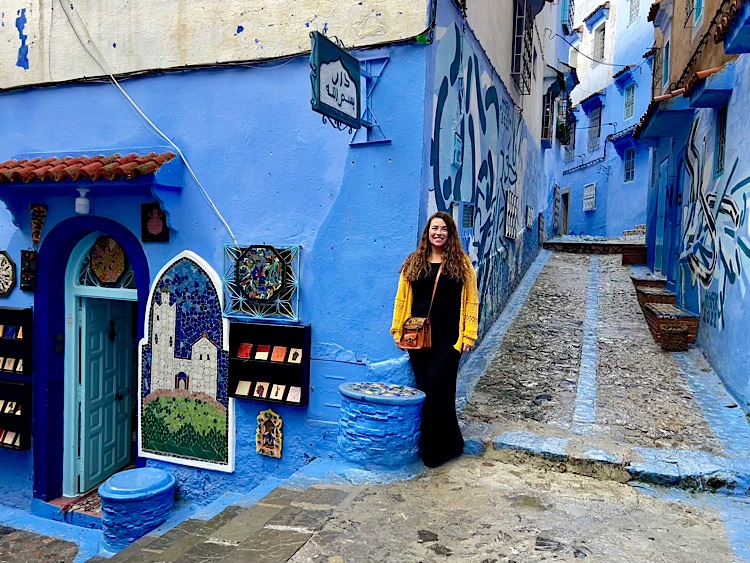
One of the great things about social media is that it can introduce you to places around the world you might not have heard of. You see a picture, you get interested, excited, obsessed, you plan a trip there. It can be amazing. It can also mean that tons of other people have seen and done the same thing, and many of these people will be walking around in what was supposed to be your dream, with selfie sticks, a hired photographer, very little sense of there being other people in the world who might want to enjoy the same spot, and zero shame. Morocco definitely has its share of those people who seem to be there just for pictures for the ‘gram, and not even to enjoy the culture and the people around them. Which can be frustrating. Especially when those people are in my shot. (Jokes.)

A lot of those people were in Chefchaouen. It can be really entertaining (like when she stands up from the staircase she’s monopolised for twenty minutes and has blue paint all over her white shorts) or annoying and disrespectful (like when they blatantly ignore the signs and the comments from the locals that you’re meant to pay to take pictures of the front of certain people’s houses).
I don’t remember when I first saw pictures of “The Blue City” somewhere on the internets, but that’s what made my book my initial trip to Morocco in 2020. This was, of course, canceled because of Covid, so for five years, I’ve been waiting for this particular corner of the world. After a windy mountain road through picturesque villages and fields of oranges and grain and goats and donkeys, our van pulled in to Chefchaouen. We got out and started climbing up and up in the approaching dusk to find our hostel, and every corner, every door, every alley way in the old town, built in the late 1400s, was already enchanting even as the sun was going down.

I had my own room, and in contrast to the outside of everything, the inside was bright orange and old wooden pieces, a triangular bathroom and ancient padlocks, doors you could barely squeeze through. The rooftop was at the end of a winding staircase and covered in plants, and I somehow managed to immediately run into the one spiky one our guide had warned us about. After a lovely group dinner with the freshest goat cheese I have ever had in my life, we snuggled in for an early night to be ready for our tour the next day.
The next morning I was buzzing from the moment I got up. A huge traditional breakfast (I miss the fresh orange juice, the msemens I covered in butter and honey) started the day off well and then we assembled to begin the walking city tour. Our guide, Emina, was an interesting combination of dramatic delivery about the history of the Berbers and Jews and Muslims and general Moroccan legend coupled with eager photo shoot director. I was nearly left behind every few minutes, often distracted by a kitten curled up in a doorway or seeing a new shade of blue, taking pictures of everything and promising myself I’d edit later.

We learned about traditional match-making and the special windows built so the maiden could look down on the suitor without his knowledge and decide if she was keen or not, about the small doorways, how all the hot goss was told at the laundry stones by the river, we tried traditional cookies, visited the mosque on top of the hill, watched the sunset, picked out our future vacation homes, made friends with flocks of goats wandering the mountainsides.

During our free time, in an attempt to get up to a high vantage point, I somehow wandered up and outside the city walls and into a construction site, which was fun. I found my way back via a barn with its animal stalls being cleaned out by the oldest woman I’d ever seen. That evening we were invited to dinner at the mayor’s home, and the women in the family made an amazing meal – tagine, of course, with perfect mint tea, olives, breads, dips, couscous.

It may no longer be an off-the-beaten path, truly authentic Moroccan town anymore, but the locals were so happy for tourists after the economic drought of Covid and then the earthquake. Every time I turned around, my heart was so happy for the bursts of color in every shade of blue, the cats and dogs that roamed freely and healthy with plenty of food and shelter provided for them (pretty rare to see!), the grumpy old men dressed in traditional djellabas, old ladies with head scarves pausing their gossiping in doorways to say hello.
Recommend.


April 17, 2024 at 10:43 pm
Love! Your words paint such a clear picture. The photos, as always, are gorgeous. Xoxo
LikeLiked by 1 person
April 18, 2024 at 6:15 am
Thank you!!
LikeLike